The Rise & Fall of McEnroe
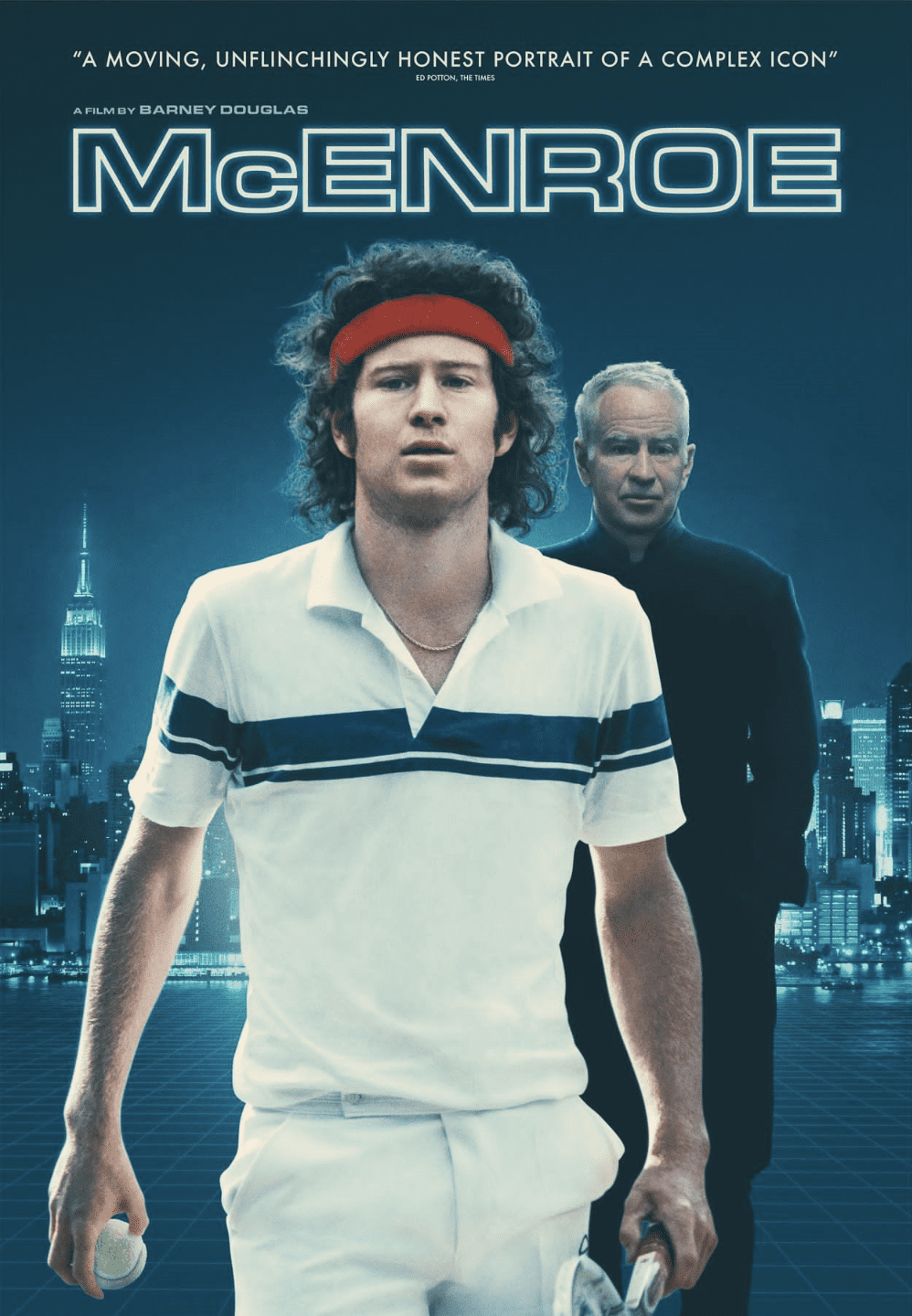
The Rise & Fall of McEnroe – You probably know about the yelling, if nothing else. But how much do you really know about John McEnroe?
No tennis player is more closely associated with New York City than John McEnroe, the brilliant if volatile lefty who won his hometown U.S. Open four times and continues to cover it as a TV analyst.
In McEnroe, a feature-length documentary look at his life and career, McEnroe and a few of his contemporaries seek to paint a broader, more complex picture of the figure he cast.
The Rise & Fall of McEnroe – Watch McEnroe on Showtime for a fresh look at the 63-year-old’s singular impact on tennis and pop culture.
Nobody embodied the rockstar (Vitas Gerulaitis was a huge role model on John) era of tennis more than John McEnroe.
The Rise & Fall of McEnroe – The original bad boy of the sport, McEnroe was famous not only for his epic matches, but also for his confrontations on and off the court.
“McEnroe” features completely unseen archive from some of the biggest matches in tennis history – including the US Open and Wimbledon – as well as home video footage from John himself.
Accompanied by interviews with icons like Patty Smyth (2nd wife), Keith Richards, Billie Jean King, and Bjorn Borg, the legendary tennis ace provides a level of intimacy and gives an unflinching account of his triumphs, struggles, friendships, and rivalries that takes the film beyond a sports biopic and into the realms of something deeply confessional.
“McEnroe” is an intimate portrait of one of the most explosive and compelling sporting icons of all time.
The Rise & Fall of McEnroe – Set over one New York night, John journeys into memory to explore why a need for connection both drove him and nearly broke him.


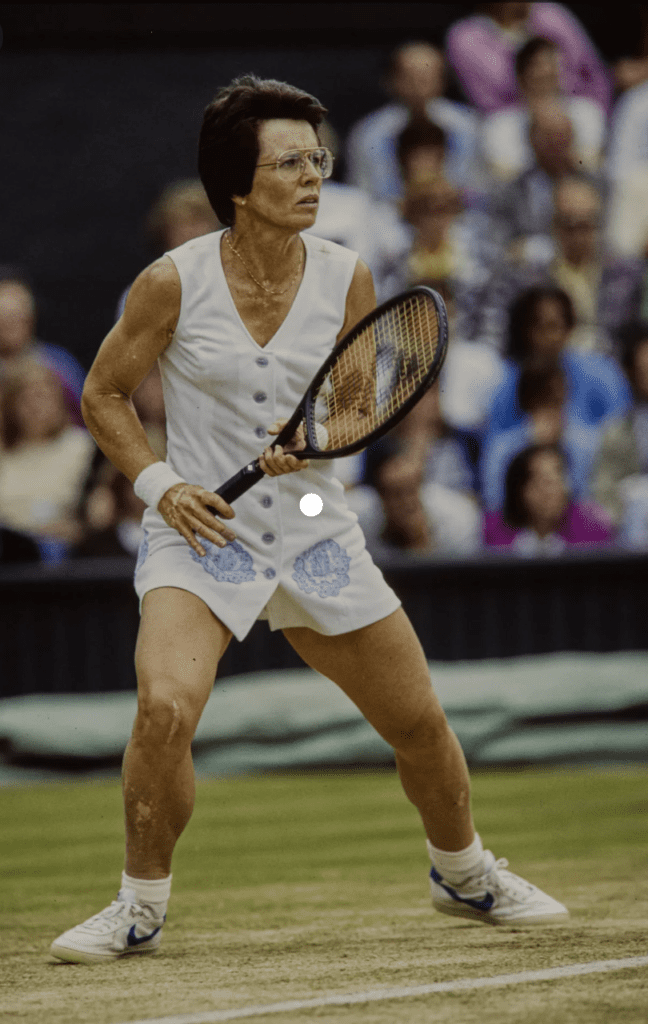


The Rise & Fall of McEnroe
The filmmakers have taken a highly-stylized approach to the storytelling here. McEnroe is seen in a sparse, dimly-lit room, then walking around the streets of his hometown of Douglaston, Queens at night; the whole thing’s set up to play like a late-night confessional.
A shot of McEnroe walking onto an empty train platform suddenly dissolves into a TRON-like visualization of his tennis mechanics, while his family and contemporaries discuss him like he’s not even there.
It’s almost done in past tense, like they’re describing a man who no longer exists, and perhaps that’s their intention, to describe the character McEnroe–the imagined McEnroe, the figure from all those old videos–as someone that exists in the past, separate from the real person.
Overall, McEnroe is a solid, well-constructed piece of biographical documentary, but ultimately it’s probably not going to change your opinion of the man too much.
It paints him as a complex, brooding figure sharply focused on winning and brusque about everything else, but we pretty much knew that.
It might have been more successful without his participation–if it were strictly constructed from the perspectives of those around him, it could play less as an attempt to explain away his behavior.
Still, it’s pretty successful at telling an entertaining story, even if it’s one you’ve mostly heard before.
This cinematic attempt to capture the essence of Superstar John McEnroe works on so many levels that we thoroughly enjoyed almost every moment of it.
John is quite candid about his evolution from a total brat during the years that he played tennis to the mature individual who he has evolved into.
From his terrible tantrums to the tender moments he now shares with his extended family.
His candor should be appreciated.
The bonus in this film is the high quality that the cinematographer introduces.
The film offers insights into one of the greatest tennis players that the United States has ever produced. John has also become one of the beat announcers for the sport.
His insights and commentaries enhance all the major tennis events at so many levels.
Who needs Pickleball when we John McEnroe calling tennis matches.
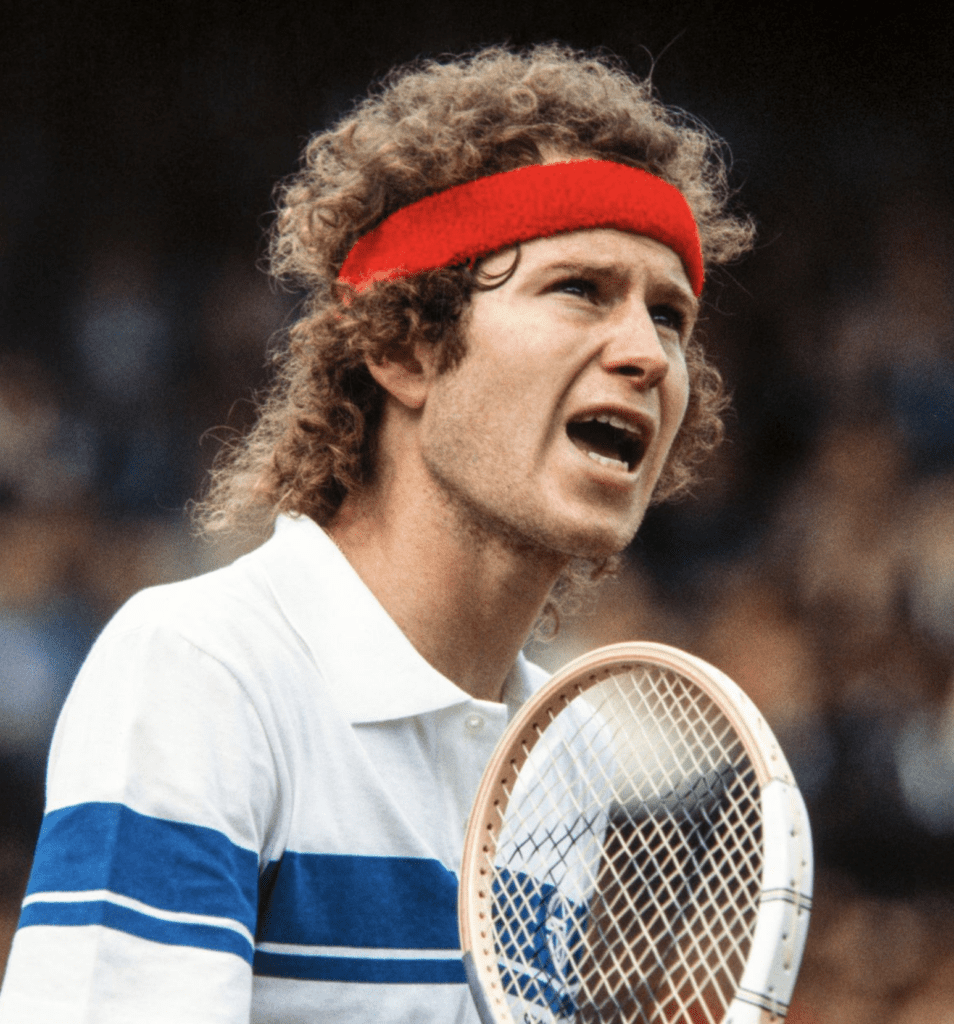
The Rise & Fall of McEnroe – The Beginning
John Patrick McEnroe Jr was born in Wiesbaden, Germany, to American parents on February 16, 1959.
Born Feb. 16, 1959, in Wiesbaden, Germany, where his father was stationed with the U.S. Air Force, he grew up in the Long Island suburb of Douglaston, N.Y.
A 5-foot-11, 170-pound left-hander, McEnroe stands as perhaps the most skilled – and controversial – of all players.
John McEnroe, in full John Patrick McEnroe, Jr., established himself as a leading competitor in the late 1970s and the ’80s.
His family moved to New York when he was only a year old.
McEnroe started playing tennis at the early age of eight, and a year later, his parents enrolled him in the Eastern Lawn Tennis Association.
He then joined the Port Washington Tennis Academy, which was the driving force for the start of his illustrious career.
On March 3, 1980, McEnroe became the top-ranked singles player in the world.
The left-handed McEnroe was known for his shot-making, improvisation and superior skills at the net.
Although he wasn’t the biggest server, his unique motion allowed him to disguise where he hit the ball.
He was also known for having cat-like reflexes.
As one of the best American players ever, McEnroe won seven Grand Slam singles titles and nine doubles titles, before wrapping up his career with 77 singles titles on the ATP Tour and 78 doubles titles.
He was known for his shot-making and volleying skills, his rivalries with Björn Borg and Jimmy Connors, and his confrontational on-court behavior, which frequently landed him in trouble with umpires and tennis authorities.
He also was noted for his poor behavior on court, which resulted in a number of fines and suspensions and, on January 21, 1990, in his default at the Australian Open.
McEnroe grew up in Douglaston, New York, and received tennis training at the Port Washington Tennis Academy nearby.
He first attracted international attention as an amateur in 1977, when at the age of 18 he became the youngest man to reach the Wimbledon semifinals.
He enrolled at Stanford University in 1977, but, after winning the U.S. collegiate title in 1978, he left school and turned professional.
In his first six months on the Association of Tennis Professionals (ATP) tour, McEnroe acquired a record of 49 wins and only 7 losses.
McEnroe’s temper tantrums, invective, and racket abuse”were characteristic features of his performances.
At the 1990 Australian Open, he became the first player to be ejected from a Grand Slam event in nearly 30 years.
In 1992 he retired from professional play and subsequently became a television announcer.
He was also involved in music, forming the Johnny Smyth Band; the name was partly inspired by rocker Patty Smyth, whom McEnroe wed in 1997; he had earlier been married (1986–94) to actress Tatum O’Neal.
During this time he continued to play on the seniors tour, and in 1999 he returned to the professional tour, competing in the mixed-doubles event with Steffi Graf; they reached the semifinals but Graf withdrew, citing an injury.
The autobiographies You Cannot Be Serious and But Seriously were published in 2002 and 2017, respectively. McEnroe was inducted into the International Tennis Hall of Fame in 1999.
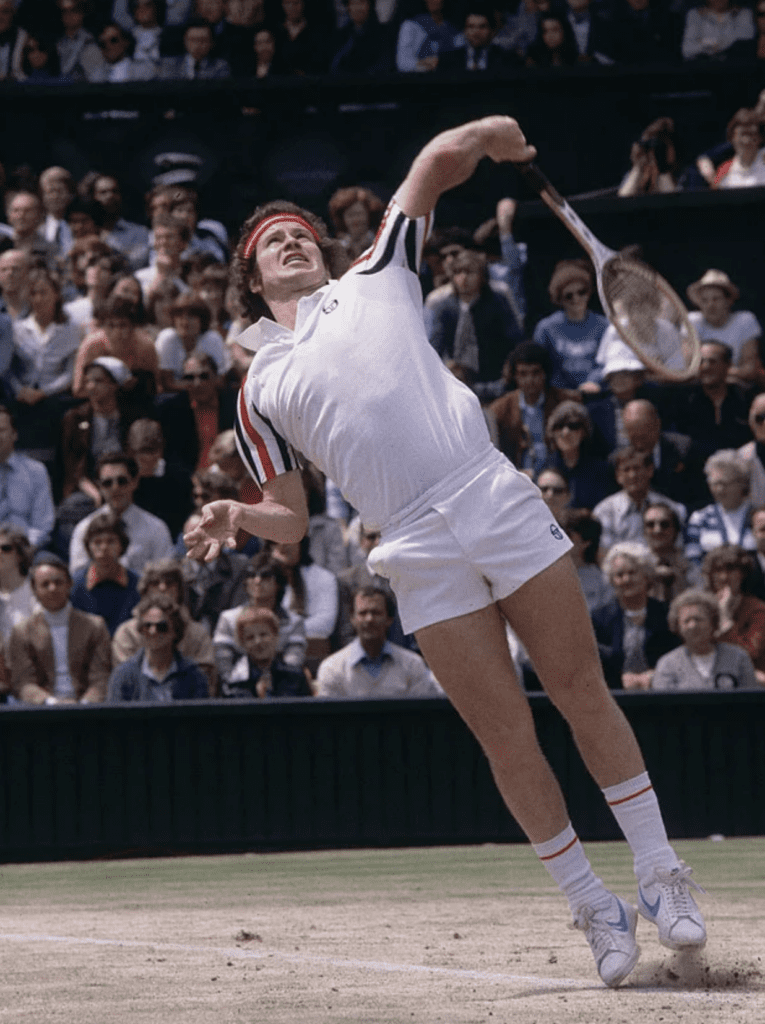
The Rise & Fall of McEnroe – Major Tournament Play
Right from the start, in his 1977 introduction to pro tennis, John Patrick McEnroe, Jr., was a hit.
An 18-year-old amateur (he would not turn pro until winning the National Intercollegiate singles as a Stanford freshman in 1978), McEnroe made his first splash in Paris, a boy edging into man’s territory.
He won his first of 17 major titles there, the French mixed with childhood pal, Mary Carillo, over the Romanian-Colombian combine of Florenta Mihai and Ivan Molina.
Soon after, electrifying Wimbledon, he went through the qualifying tourney and all the way to the semis, losing to Jimmy Connors.
It was also a record for an amateur in the open era.
Immediately Mac was a player to reckon with.
Brilliant in doubles and singles, he was distinguished by shot making artistry, competitive fire and a volatile temper.
The last led to heavy fines, suspensions and, at the 1990 Australian Open, an extraordinary fourth-round disqualification for showering abusive language on court officials.
A magnificent volleyer with a feathery touch, he was an attacker whose fast court style netted four U.S. Open and three Wimbledon singles.
He had the baselining strength to do well on clay at the French.
At 20, John won the U.S. title for the first time over fellow New Yorker Vitas Gerulaitis, the youngest winner since Pancho Gonzalez, also 20, 31 years before.
He repeated in dramatic battles with Bjorn Borg in 1980 and 1981.
McEnroe won again in 1983, a quickie with unseeded New Zealander Chris Lewis and in 1984, reaching the pinnacle of his virtuosity; a virtually flawless wipeout of Connors, 6-1, 6-2, 6-2.
His most celebrated result may have been a loss, the 1980 Wimbledon final called by many the greatest of all.
Beaten, 1-6, 7-5, 6-3, 6-7 (16-18), 8-6, McEnroe nervelessly staved off five match points during the monumental fourth-set tie-breaker to fight Borg to the fifth-set wire.
A year later he cut down Borg on Centre Court, 4-6, 7-6 (7-1), 7-6 (7-4), 6-4, ending Bjorn’s incredible five-year, 41-match Wimbledon run.
Borg retired shortly thereafter.
McEnroe won for the last time in 1984, over Lendl.
But he was defeated in the Flushing Meadow rematch 12 months later, relinquishing to Lendl the World No. 1 ranking McEnroe had held for four years.
Three intense rivalries stand out during his career.
He had the edge on Connors (31-20), but not Lendl (15-21), and was even with Borg (7-7).
Except for the French Open lapse against Lendl, he was unbeatable in 1984, winning 13 of 15 singles tournaments on an 82-3 record.
Other big seasons were 1979 (10 titles on a 94-12 record), 1980 (10 titles on 88-18). In 1979 he set an open-era record with 27 overall tournament victories, 17 in doubles, winning a record total of 177 matches.
He won the season-climaxing Masters singles thrice, 1978, ’83-’84, and is the all-time overall Open Era leader with 155 tournament victories: 77 singles and 78 doubles.
He is third in singles titles behind Connors’s 109 and Lendl’s 92, tied second in doubles (with Tom Okker) behind Todd Woodbridge’s 83.
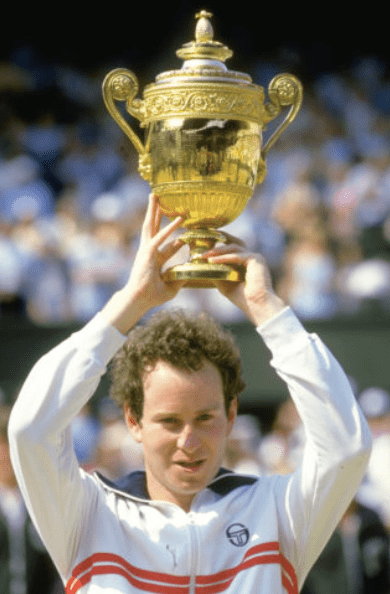
The Rise & Fall of McEnroe – The Accomplishments
Ten years a member of the World Top 10, he was four times No. 1 (1981-84).
W-L, 883-198
The former star won 77 singles titles and 78 doubles titles.
Prize Money Singles & Doubles Combined, $12,552,132
According to CelebrityNetWorth, John McEnroe has a fortune of $100million.
MAJOR TITLES (17)
Wimbledon singles, 1981, 1983, 1984; US. singles, 1979, 1980, 1981, 1984; Wimbledon doubles, 1979, 1981, 1983, 1984, 1992; US. doubles, 1979, 1981, 1983, 1984; French mixed, 1977
OTHER U.S. TITLES (4)
Indoor singles, 1980; Hard Court singles, 1989; Indoor doubles, 1980, with Brian Gottfried; Clay Court doubles, 1979, with Gene Mayer.
DAVIS CUP
1978, 1979,1980, 1981, 1982, 1983, 1984, 198Z 1988, 1989, 1991, 1992; record 41-8 in singles, 18-2 in doubles.
SINGLES RECORD IN THE MAJORS
Australian (18-5), French (25-10), Wimbledon (59-11), US (65-12).
From 1983 to 1985 he won 75 matches on indoor carpet, setting a record for most consecutive victories on one surface; his record was broken in 2007 by Rafael Nadal of Spain (competing on clay).
In 1999, McEnroe was inducted into the International Tennis Hall of Fame.
The 63-year-old has gone on to have a successful transition into the commentary box for various networks like ESPN, CBS, NBC, and BBC.
He was never the same player after 1985.
In 1986 he dropped out of the top 5 players in the world forever.
He has three children by ex-wife Tatum O’Neal, two by wife Patty Smythe, continues to play senior events and has made a successful career as a TV commentator on tennis.
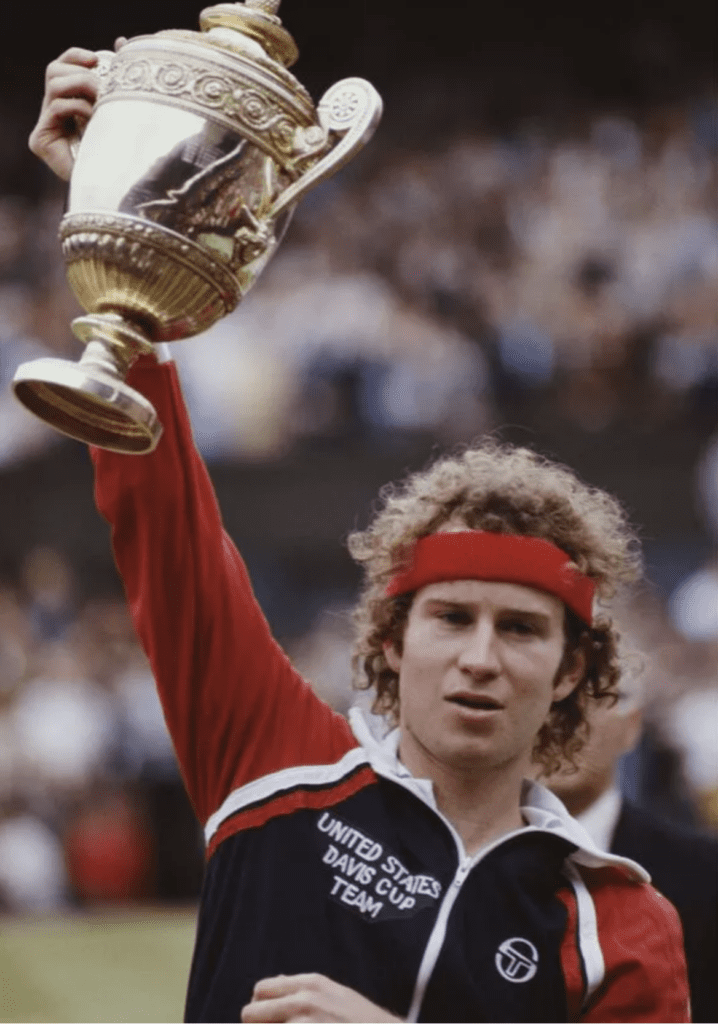
The Rise & Fall of McEnroe – Davis Cup
In 1978 McEnroe helped the United States win the Davis Cup for the first time in five years by beating the Chilean competitors with doubles partner Brian Gottfried and by winning the singles over John Lloyd and Buster Mottram, both from Great Britain.
He revived American interest in the Davis Cup that had been shunned by Connors and other leading countrymen, saying, “My mother made me promise her I’d always play for my country if I was asked.”
Right from the start, as a 19-year-old rookie in 1978, he gave Capt. Tony Trabert’s team a lift, and gave the U.S. the Cup that had belonged to other countries since 1973.
McEnroe continued as a mainstay in helping the U.S. win four more Cups (1979, ’81-’82, ’92), and set numerous U.S. records: Years played (12), series (30), singles wins (41), singles and doubles wins altogether (59).
Another thriller was Mac’s five-set win over Jose-Luis Clerc of Argentina to send the Cup to the U.S. in the 1981 final at Cincinnati.
He and German Boris Becker played for six hours, 21 minutes for Boris’ 1987 Cup relegation victory at Hartford.
McEnroe was named U.S. captain in 1999 and served one year, 2000, quitting after three series (3-2 wins over Zimbabwe and the Czech Republic, a 5-0 loss to Spain),and was replaced by his younger brother, Patrick McEnroe.
A workhorse, he played both singles and doubles in13 series, and he and Peter Fleming won 14 of 15 Cup doubles together.
McEnroe subsequently led the U.S. team to four more Davis Cup titles.
The Rise & Fall of McEnroe – Performance Worth Watching
A handful of McEnroe’s family members and contemporaries step in for interviews; the most exciting and compelling of those come from fellow tennis great Billie Jean King, who offers incisive insights into the way McEnroe visualizes the game.
The Rise & Fall of McEnroe – Memorable Dialogue
“My mom used to love to tell the story of when my dad came home from law school,” McEnroe’s brother recalls, offering context for how their family upbringing formed his competitiveness, “and said ‘hey, I finished second’, and she said, ‘well, who finished first?’
John had a little bit of that.”
Watch USA Olympic Basketball The Redeem Team on Netflix >>
Watch Facing Nolan on Netflix >>
The Rise of the Lakers Dynasty on HBOmax >>
ESPN’s Derek Jetter As The Captain >>
What to Binge Watch on Netflix >>



